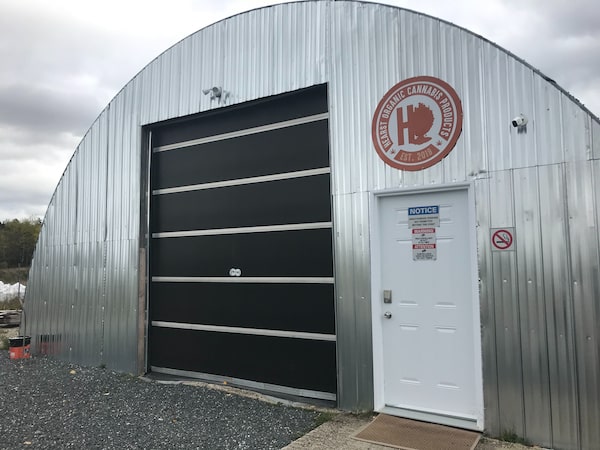Joël Lacelle was tired of spending so much time away from home.
As a diamond driller who had previously spent years as a truck driver, Mr. Lacelle would often have to leave his wife and two sons back in Hearst for months at a time. When the Liberals took power in 2015, he and his wife started discussing the idea of having him start a cannabis company based in the northern Ontario logging town where both of them were born.
“It took a trip to Mexico, but I convinced her,” joked Mr. Lacelle before taking Cannabis Professional on a tour of his company – Hearst Organic Cannabis Products – consisting of a greenhouse and a smaller storage and office building barely 200 metres from his family home.
Construction began in June, 2018, and was 85-per-cent complete by the time Mr. Lacelle submitted his application to Health Canada on Oct. 19. Having spent 25 years growing cannabis for himself and his friends, Mr. Lacelle received his licence in mid-July, so just celebrated three months of growing weed legally.
Over the course of an hour-long tour and interview, Mr. Lacelle shared details of his experience navigating the application process, getting his facility up and running and leaving the illegal market behind. Those details are reproduced below.
The application process
“It was actually fairly straightforward,” Mr. Lacelle said of the Health Canada application process. “It is all there in the [Cannabis Act] for anyone to read.”
“But it wasn’t like we just applied and then got the licence,” he said, “we had to go back and forth.”
Lights represent one good example, he said. One of the first things Health Canada asked about after receiving his video evidence package was whether he had covers for his lights in case a bulb shattered. His solution was to install shatterproof, food-grade bulbs and that seemed to satisfy the regulators.
Another issue came up when an official noticed a baseboard was not fully sealed along the exterior of a storage room wall.
“We just re-sealed it and moved on,” he said. “It was little things like that.”
The facility
The company has spent about $410,000 getting to where it is today, Mr. Lacelle said, noting he did most of the construction work himself. The goal is to keep the total capital cost under $500,000 for his 2,100-square foot greenhouse space, he said, noting he still had a few more pieces of equipment to buy.

Hearst Organics, a microgrowing facility in Hearst, Ontario. Photo: Jameson BerkowThe Globe and Mail
He and his wife sold the duplex they had owned in the Ottawa area as an income property to cover part of that bill, with a longtime friend of Mr. Lacelle’s agreeing to buy a minority stake in the business.
“You don’t need all of that stuff that the big guys use,” Mr. Lacelle said. “That is one thing we should get clear is you don’t need all the bells and whistles that the big LPs have. They spent millions just to make it seem harder to everybody else.”
“I have been growing weed for probably 25 years now and it has never been complicated, obviously you have to put care and love and so on into your plants, but sometimes that means slowing down production a bit and concentrating on being healthy,” he said. “Everybody wants to start big, but you know what honestly? I would rather have smaller crops and maybe not as big profits, but a controlled crop.”
His first crop is three weeks into flowering and is due for harvest in mid-November. Half of the plants in the greenhouse are Sour Diesel and the other half is Crown Royal, though the greenhouse also has a separate 100 square foot grow tent that serves as the nursery space for Hearst Organics. There, Mr. Lacelle is testing out some Green Crack and L.A. Confidential.
He grows in no-till soil, uses cannabis leaves as mulch and is expecting to complete the organic certification process within the next four months.
“I should be able to get more than 100 pounds from that first harvest,” he said, noting he only utilized about 1,300 square feet of the total greenhouse space for the initial crop. “And we should be able to ramp up to 500 kilos per year. If you’re not able to produce at that level as a micro than you’re just not being efficient.”
-
/www.theglobeandmail.com/resizer/s5R8Yu4E0PQD0ihS9vOh-LsHB6M=/arc-anglerfish-tgam-prod-tgam/OBHBFSPW6REVDGO5JQJHEWPLSM.png)
-
Help us understand how cannabis legalization going across the country
Participate in Cannabis Pro's first-ever Cannabis Confidence Survey.
 Jameson Berkow
Jameson Berkow